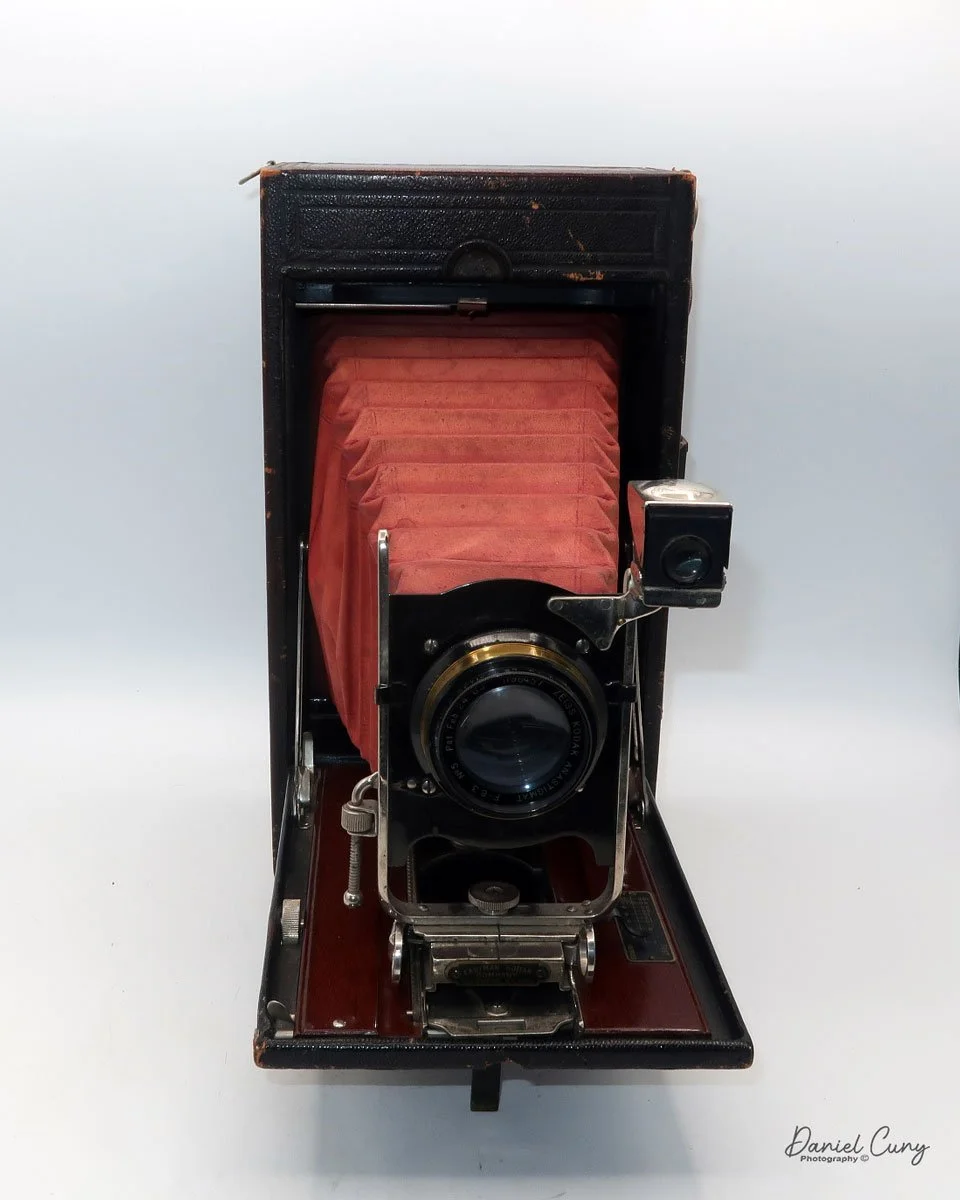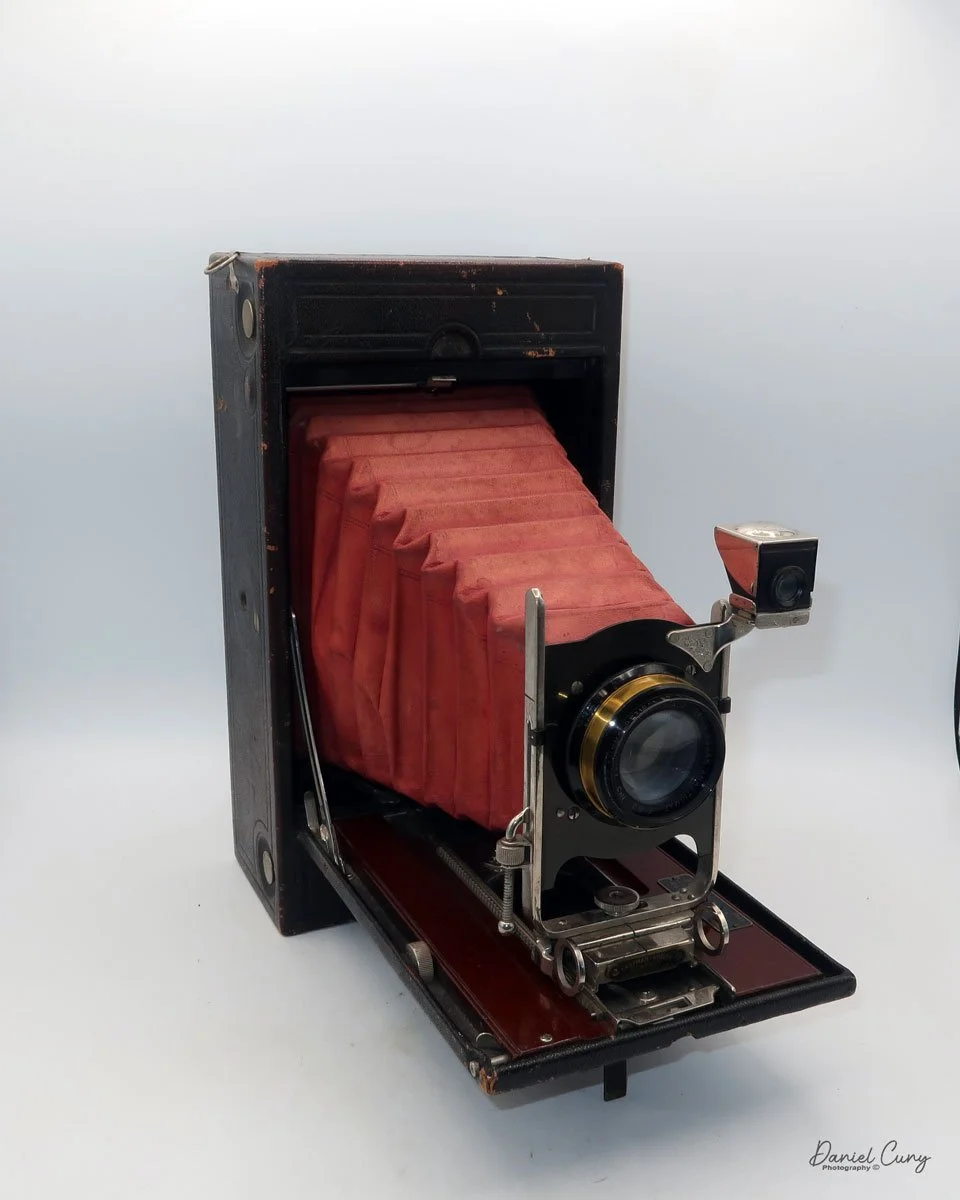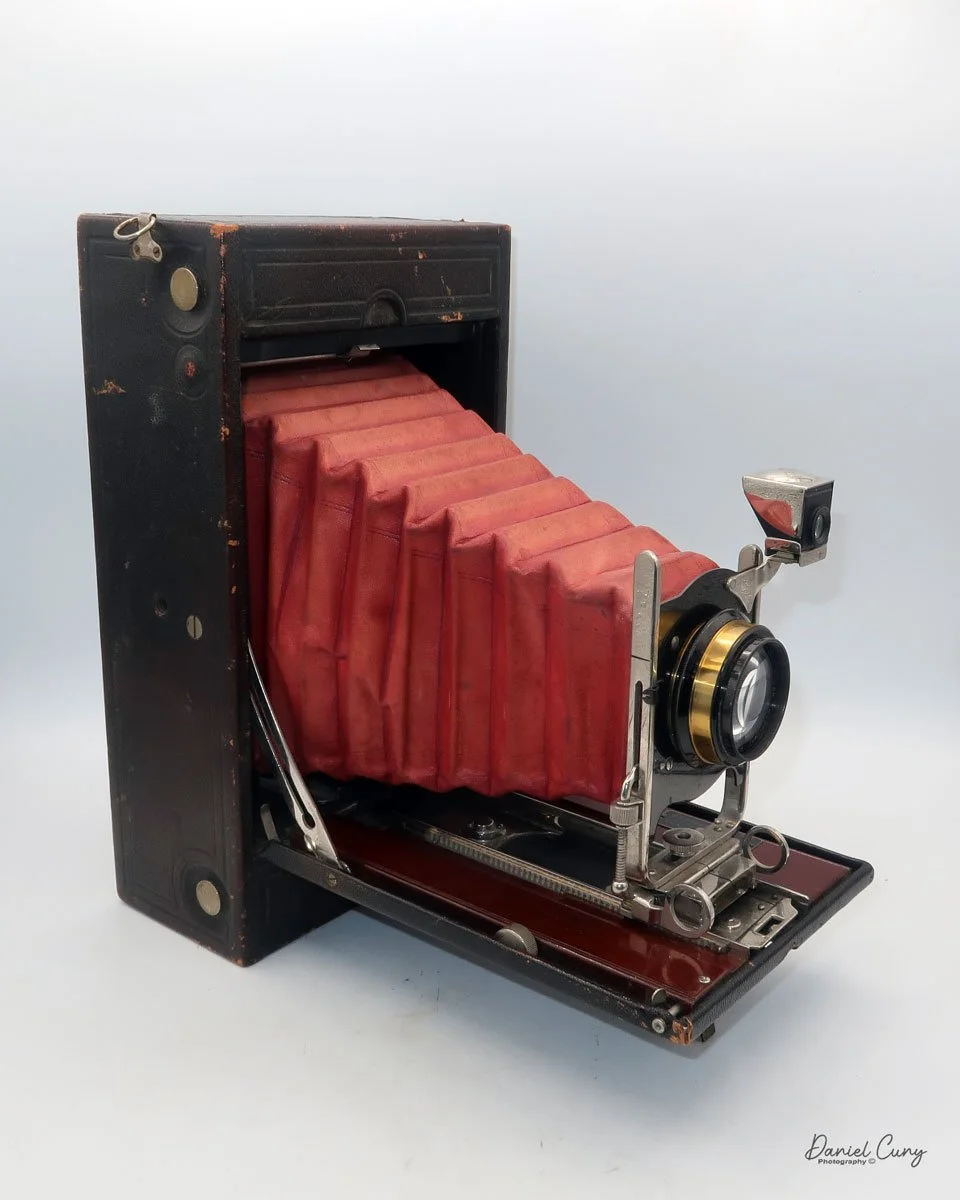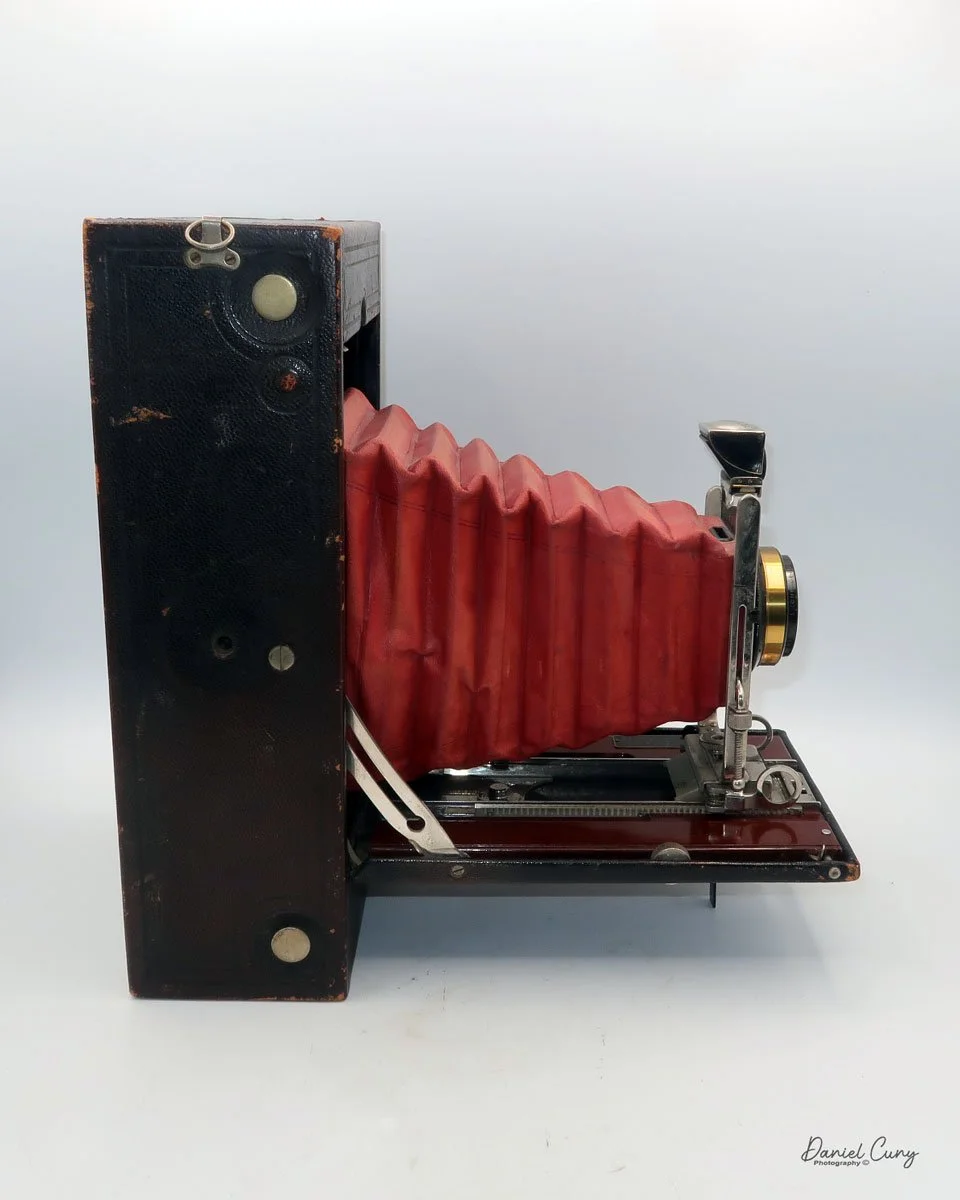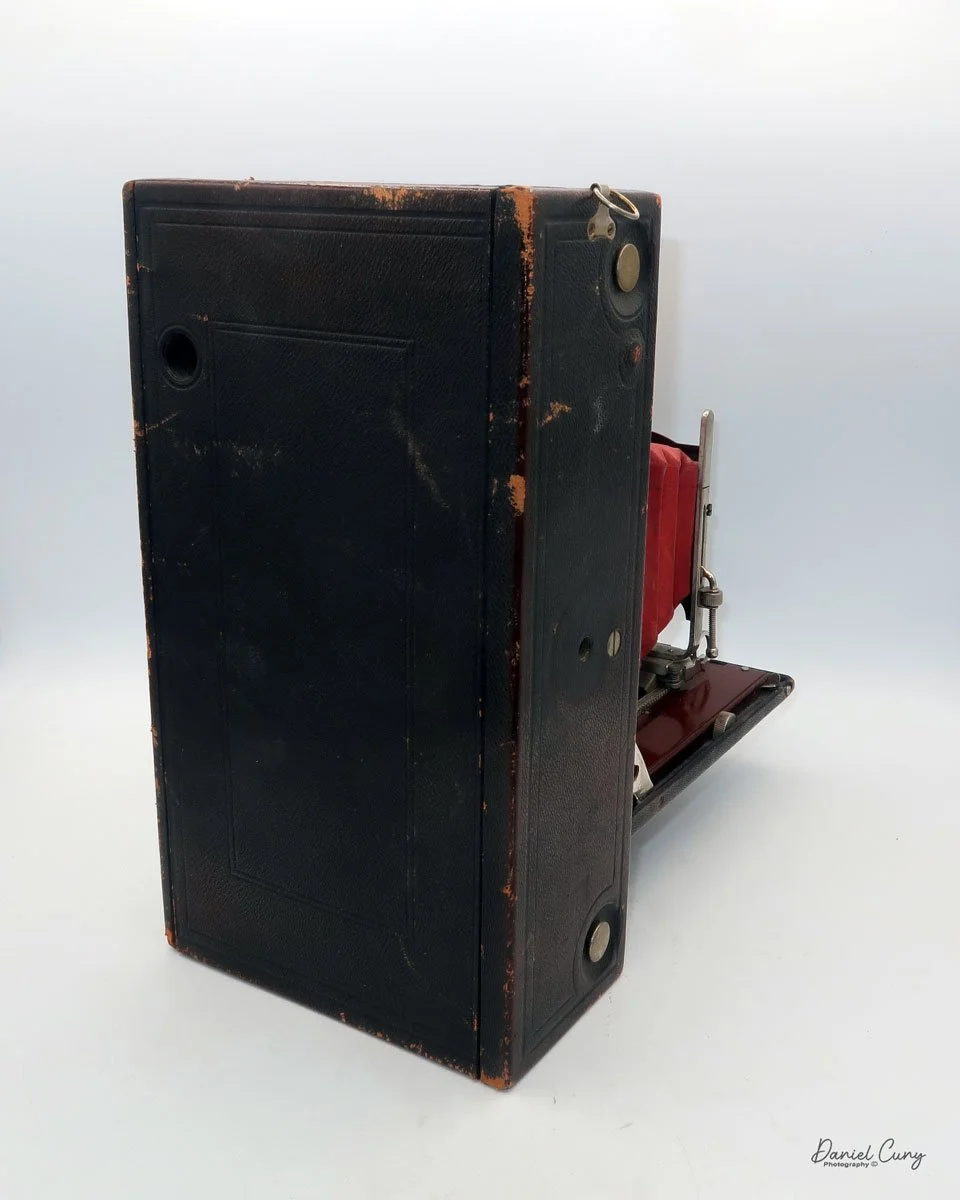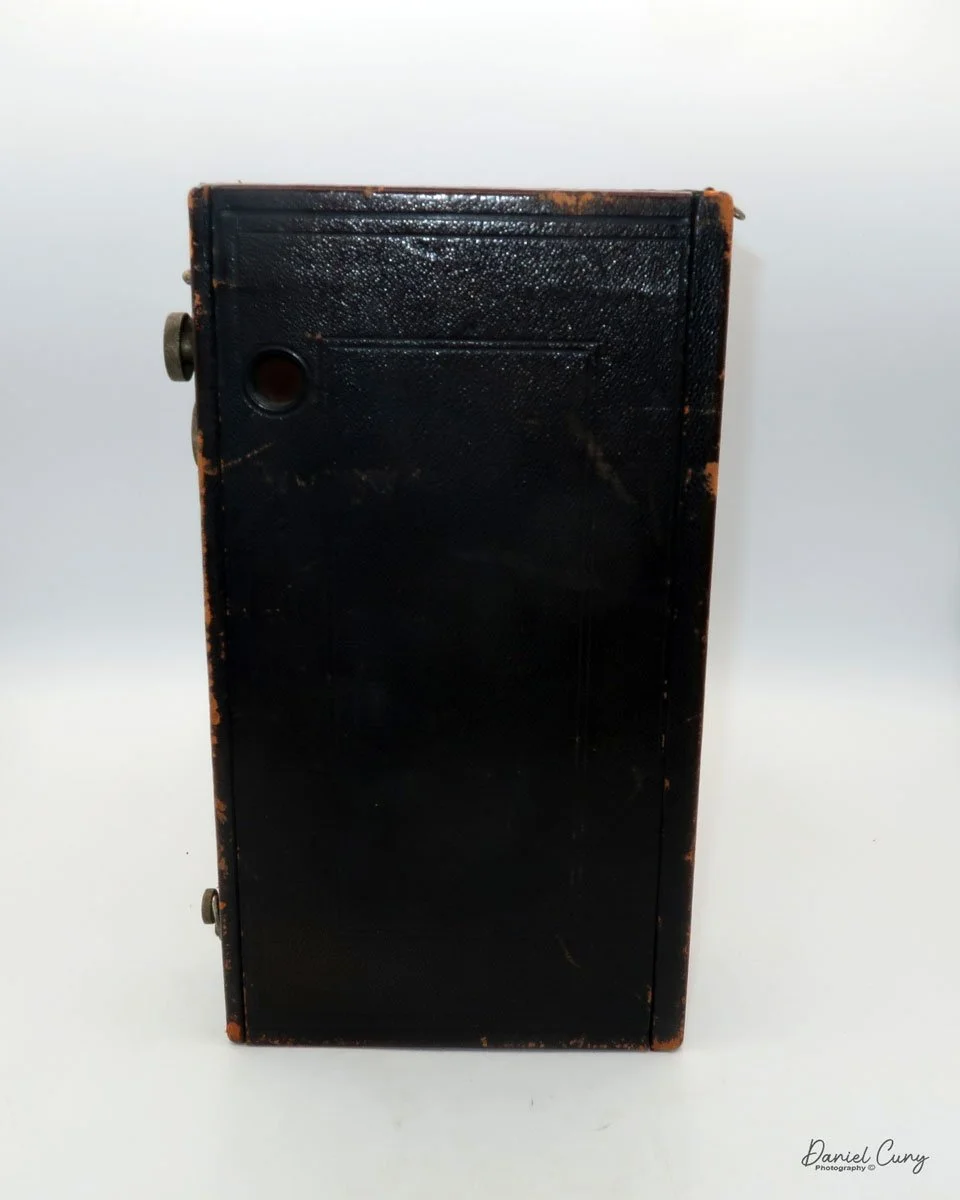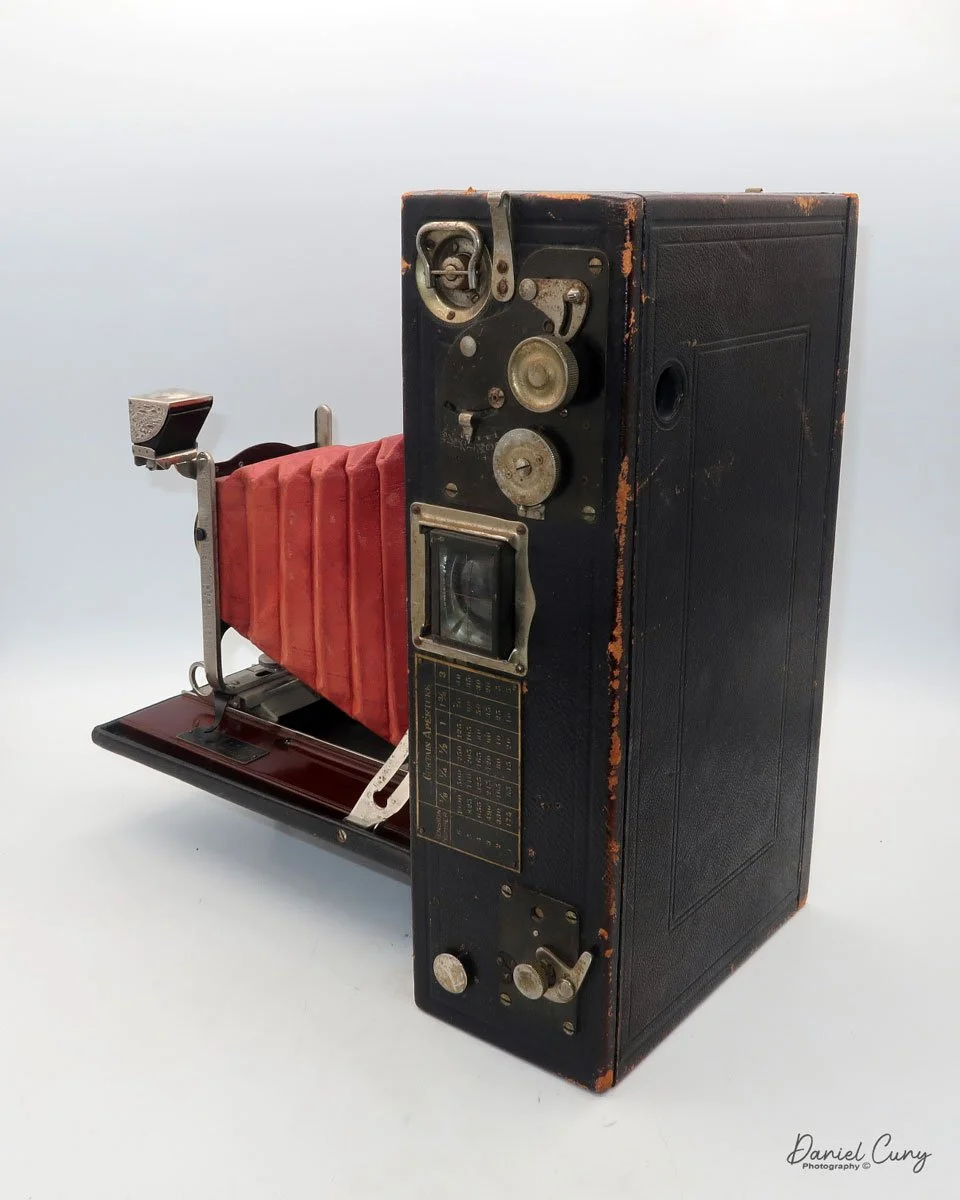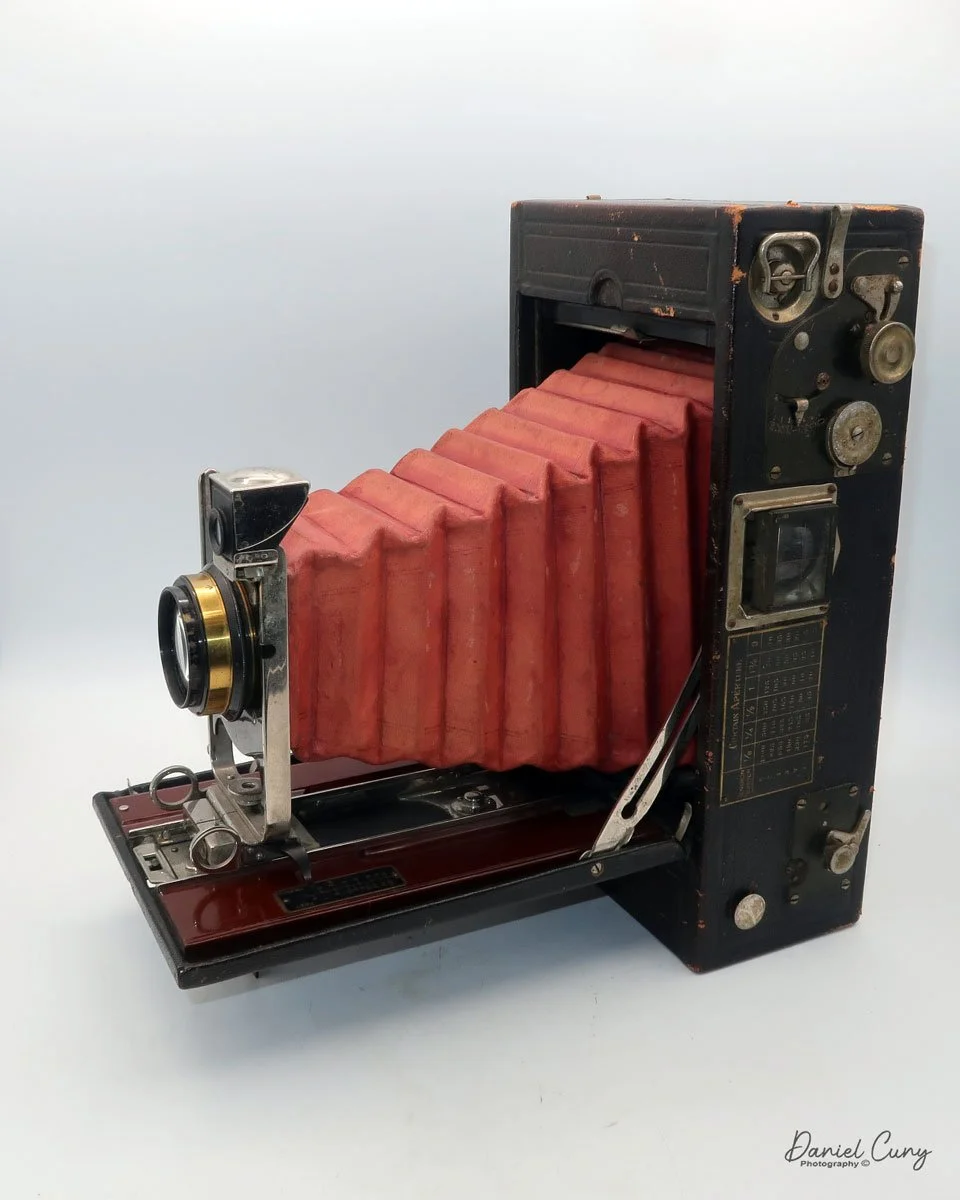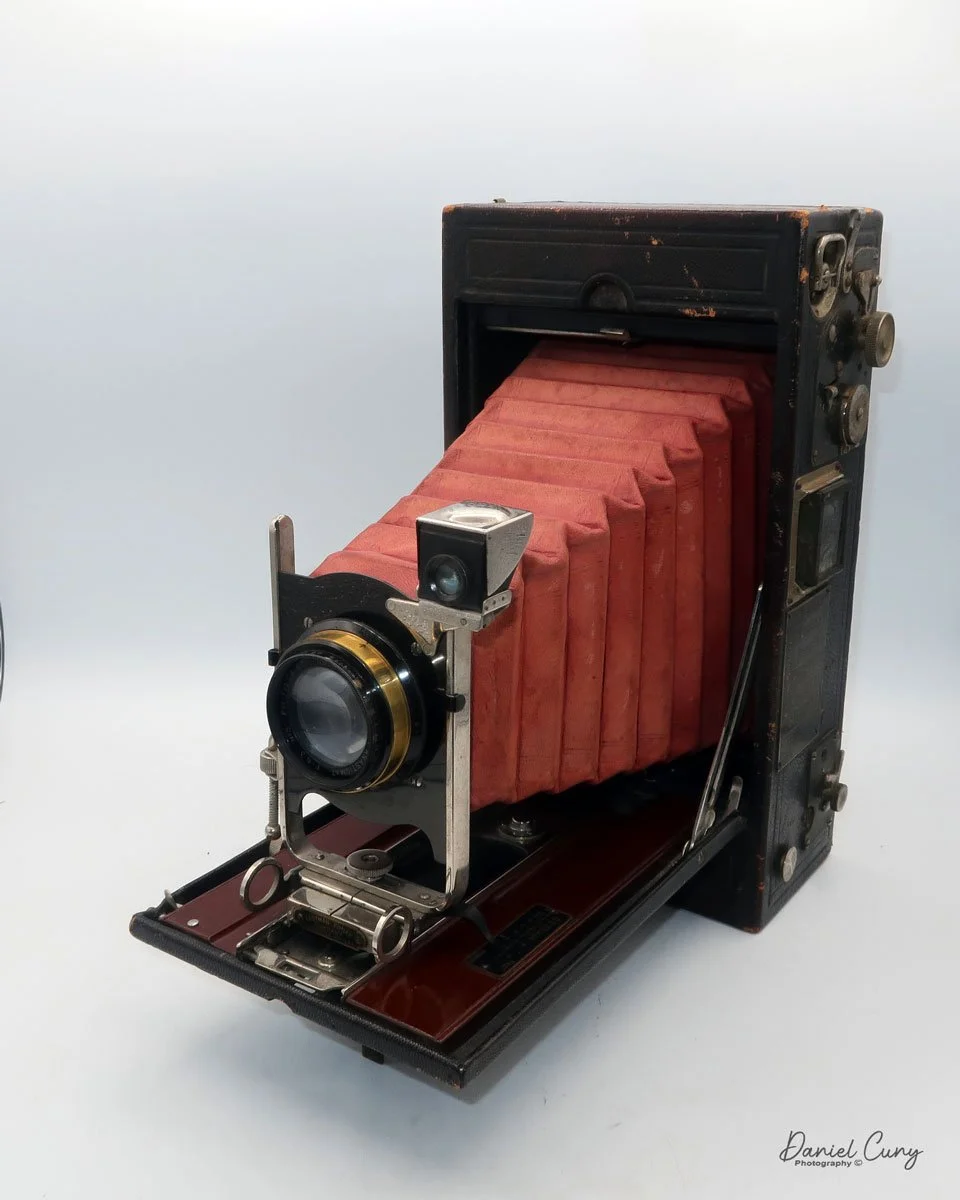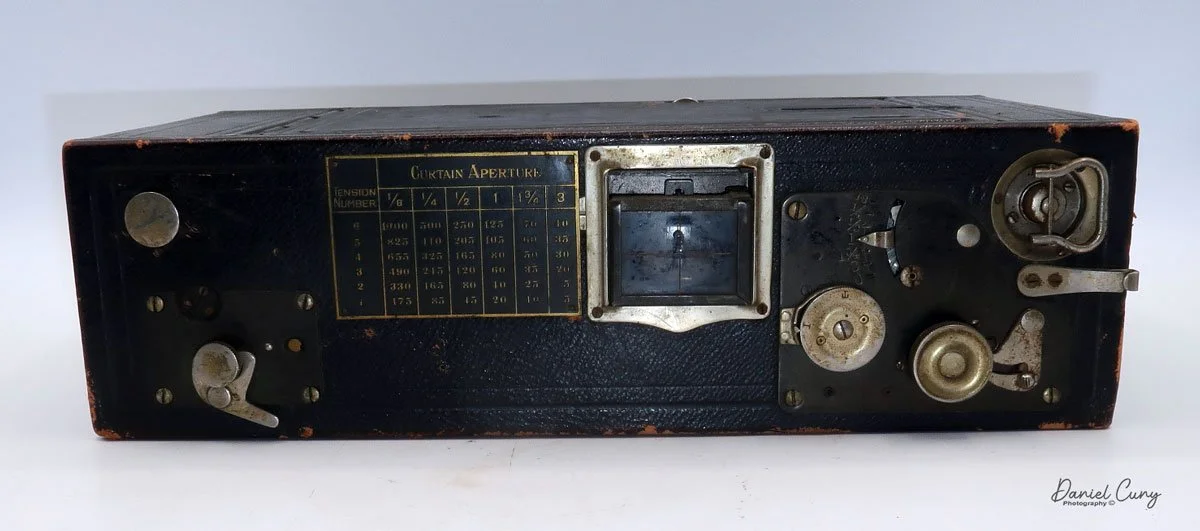My QRS Kamra in box with manual
I first saw the QRS Kamra many years ago at a camera show when I was still living in the San Francisco Bay area. The camera has a look unlike any 35mm camera I had seen before. Up until this time, I was used to looking at a 35mm camera as either a single-lens reflex or a rangefinder style camera. When I first came across the QRS Kamra, my initial impression was that it was a movie camera, given that many cameras from this era have a rather boxy style.
I spoke with the vendor who had the camera, and he let me try it out, warning me that it wasn't working, which is a common issue with this camera. Still, after picking up and looking at the beautiful brown mottled finish, odd looking shutter release that also seconds as the film transport, and the overall oddness (to me) of the camera, I told myself that I'd like to have one for my collection some day, because the price of the camera was more that I could spend on a camera at the time.
Back portion of the QRS Kamra
Years go by, and the kids grow up, all the while my fascination with cameras kept growing. During these times, I would frequent a local flea market held at a drive-in theater on Sunday mornings, and I can still remember looking over one person's goods for sale and recognizing what I had many years earlier at the camera show. It was indeed a QRS Kamra. I spoke with the vendor at the flea market, and they mentioned that the camera was their grandfather's from a small collection he had owned. They just wanted to get rid of it, so I bought it for a reasonable price. Unfortunately, this camera was missing the shutter release and winding crank, a common issue with this model. At the time, I was thrilled to have it in my collection.
QRS Kamra w/Registration cards.
I generally keep cameras in my collection for a few years, then look for a better version if I plan to keep it. About eight to ten years after purchasing the QRS Kamra, I put it up for sale on eBay and sold it to someone else looking to add it to their collection. Since then, I purchased another QRS Kamera in the box with a handle, although it had a broken handle.
On another occasion, many years after selling the QRS Kamra, I purchased a "lot" of cameras and photo items. Hidden in the photos, I found an Ellison Kamra, a camera very similar to the QRS Kamra. It's slightly larger, featuring a pull-down lens and viewfinder, and is made from Bakelite, dating back a couple of years. I was amazed to find it among this lot of cameras. Looking back at the photo, all you could see was one of the ends, as it was buried under several different items.
In 1926, Michael Ellison and Edward McAuliffe of Los Angeles filed a patent for a new two-bladed shutter system. They wanted to use the new shutter on a camera they designed and built called the Ellison Kamra. They only produced one camera, which used 35mm film, a format popular in both movie and still cameras at the time. Unfortunately, the Ellison Kamra only lasted a few years, and by 1935, they were out of business.
The QRS Kamra was also sold under the DeVry Kamra after QRS purchased DeVry in 1929, but this only lasted for a year. The unusual item I still can't put together is the relationship between both the Ellisons and QRS Kamra's. They both have similar-looking cameras, use the same shutter system, and share very similar layouts.
History:
The histories of DeVry and QRS, though largely separate, are linked by a noteworthy, albeit brief, corporate union in the early 20th century. Both companies originated in Chicago with a focus on cutting-edge technology of their time.
Michael Ellison and Edward McAuliffe Patent
Herman DeVry, an inventor and innovator in visual education, founded the DeVry Corporation in 1913. He made a name for himself by creating the "Theater in a Suitcase," the first portable motion picture projector, which revolutionized the use of film in schools and other institutions. His work was dedicated to making learning more visual and accessible through technology.
Around the same time, the QRS Music Company, founded in 1900 by Melville Clark, was a dominant force in the music technology of the era: the player piano. QRS became the world's largest manufacturer of piano rolls, capturing the live performances of famous artists and making music widely available for in-home entertainment long before the advent of widespread audio recording.
The paths of these two innovative companies converged in 1929 when QRS, looking to diversify its technology portfolio, purchased the DeVry Corporation. For a short period, the company operated under the name QRS-DeVry, producing devices like movie cameras and projectors. However, this merger was short-lived.
By the early 1930s, the two entities went their separate ways. Herman DeVry, in collaboration with Dr. Lee de Forest, shifted his focus entirely to technical education, establishing DeForest Training School in 1931. This institution would evolve over the decades, becoming DeVry Technical Institute and eventually the well-known DeVry University, a prominent for-profit institution focused on career-oriented education.
Meanwhile, QRS returned to its musical roots. After a series of ownership changes, it continued to produce piano rolls for decades and adapted to new technologies, eventually developing modern digital player piano systems. While their corporate marriage was brief, both DeVry and QRS left lasting, independent legacies in the fields of education and automated music technology.
My Kamra (Camera):
My QRS Kamra is 7.5" wide by 3" deep by 2.5" tall, and weighs 1 pound, 14.1 ounces. The serial number on my Kamra is Series No. A 3008, so it is a relatively early version of the camera. The camera is made of a brown Bakelite material with cotton filler, which gives the camera a mottled look. The camera has a fixed focus 40mm f7.7 lens and a bright viewfinder.
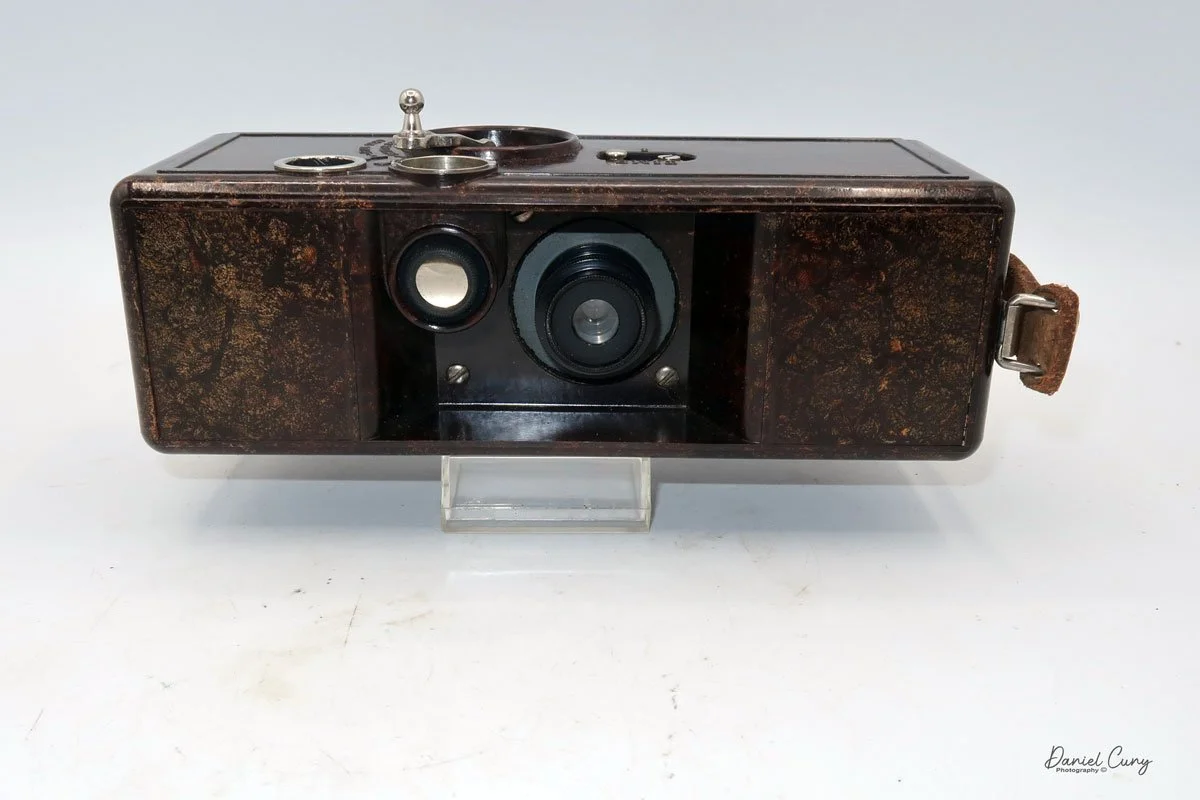



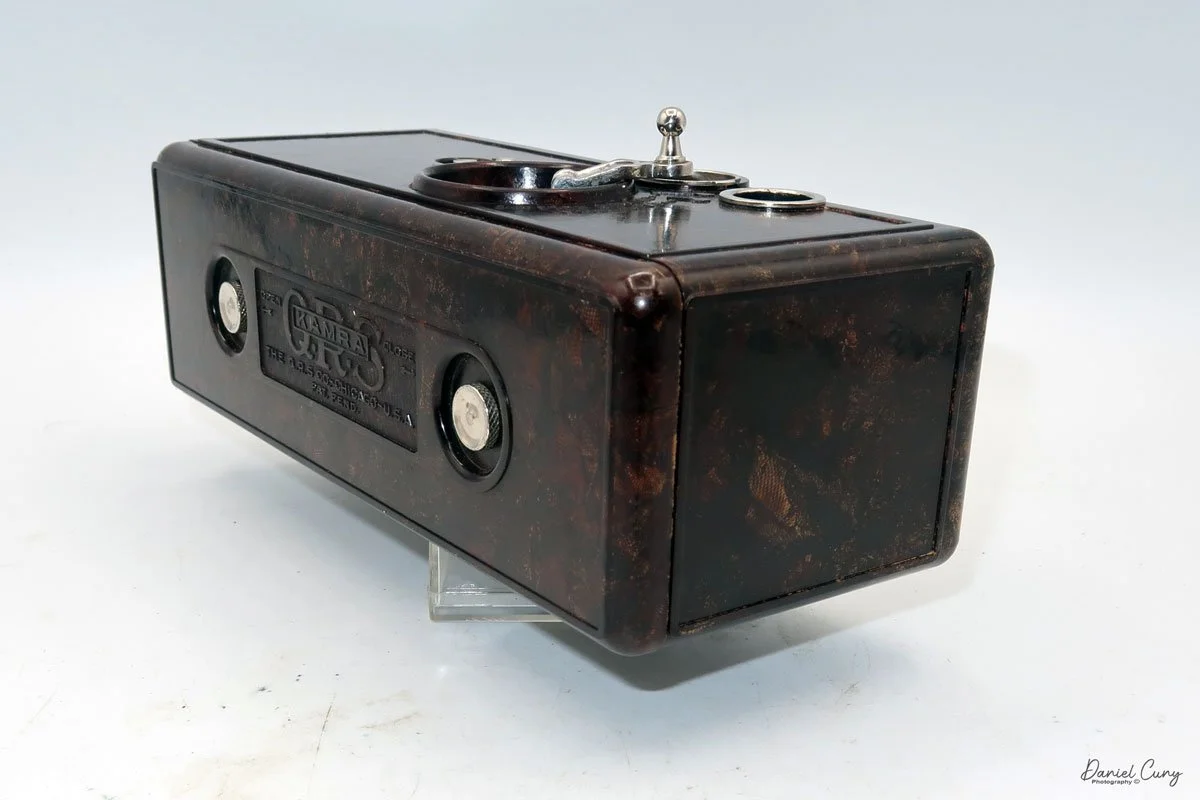
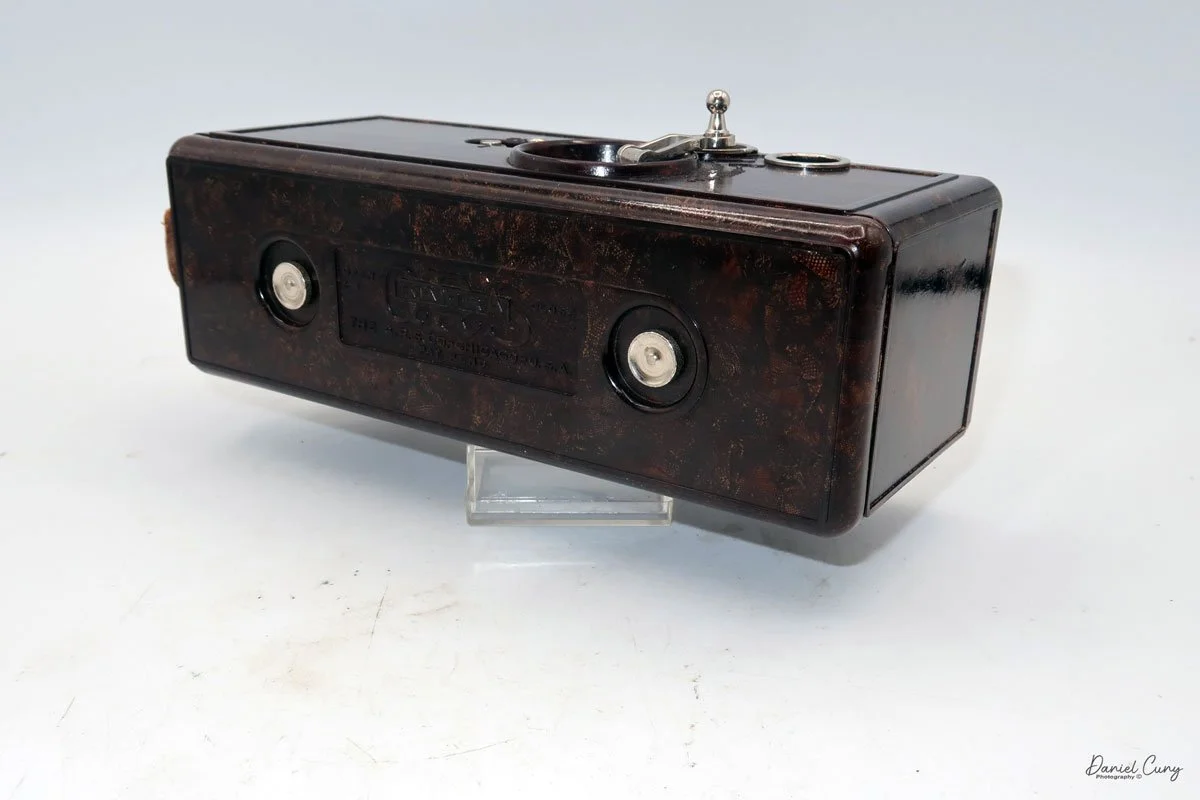


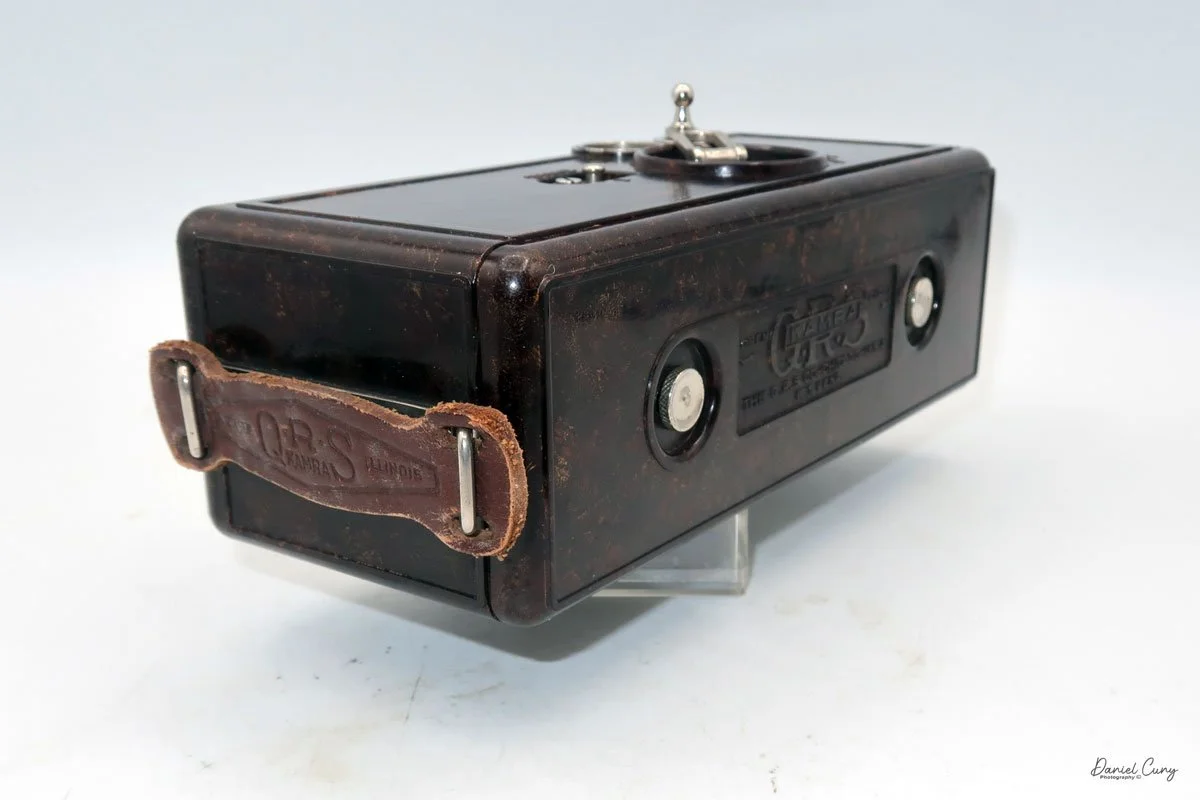
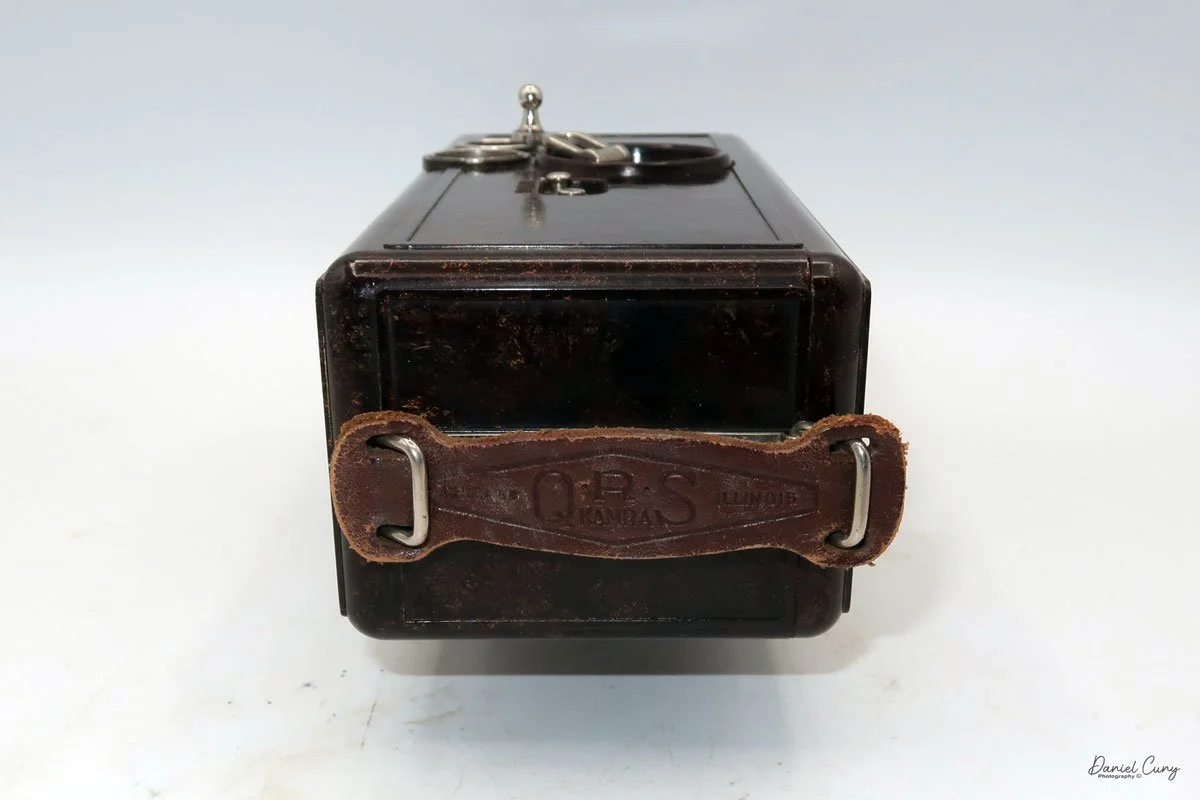
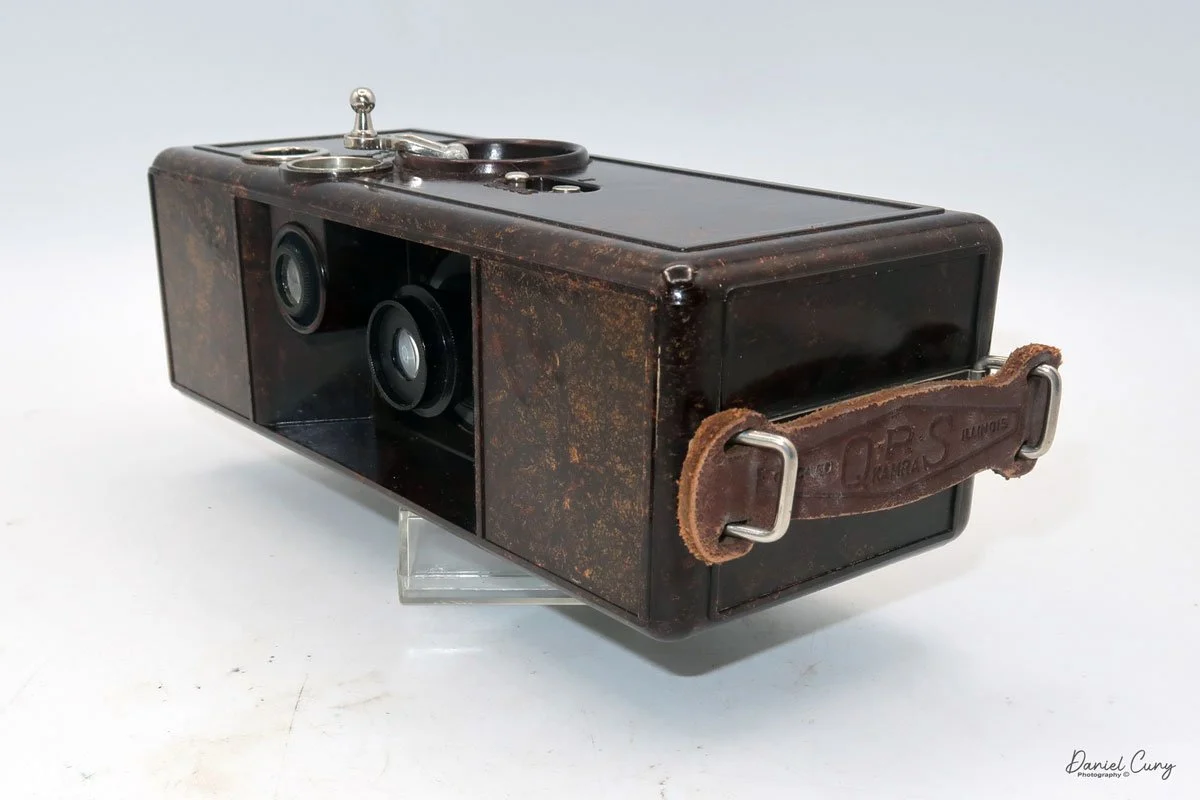

On top of the camera, all the controls are located. There are really only two controls on the camera. On the far left, you'll find the shutter setting options: "time" for long exposures and "I" for instant. Just to the right of the shutter settings is the fold-up crank. This crank is turned in the clockwise direction to advance the film, or to the counterclockwise direction to snap the photo.
Just above the shutter release and film advance crank is the bright viewfinder, and to the right of that is the frame counter. This QRS Kamra allows for up to 40 photos to be loaded into their special film cassettes.
To open the back to load film, slide the two knobs on the back of the camera to the left, which allows the back to come off. Once the back is off, you can see two metal cassettes inside the camera. The cassettes take 35mm film, which you'd load into the cassette on the left, and the exposed film would travel into the cassette on the right. There is no inner spool in the cassettes; the film slides into the cassette, very similar to how the Ansco memo cameras operate.
When you turn the crank on top of the camera to advance the film, the drive gears on top and bottom transport the film from the supply cassette into the exposed cassette. The advanced gears are attached to the frame counter, which would move to the next frame. Once all the images were taken, you take the cassette on the right to be processed. Then load the camera with more film and take more photos.
The camera is straightforward and basic, without a lot of bells and whistles. The cameras were only made for a few years, first as the QRS Kamra, then, after QRS was purchased, the camera became the DeVry Kamra. Unfortunately, due to a few factors, the cameras were only made for a few years. One factor was the emergence of 35mm cameras, and the second was the poor quality of the advance and shutter release wheel, which broke on many of the QRS and later the DeVry Kamras.
Conclusion:
I'm glad to have the odd and unusual camera in my collection. The more I think about the connection between the Ellison camera and the QRS Kamra, the more I realize its significance. The QRS company was looking for an inexpensive and straightforward camera. With the new two-blade shutter the Ellison company had, I'm sure they were anxious to get it onto other cameras, and they made the connection somehow.
Like many of these cameras, mine is operational, but I discovered a fascinating individual in the UK who rebuilt the shutter and created a more reliable crank for the top of the camera. Here is his article on Restoring a QRS Kamra. Once he got the camera operational, he mentions towards the end that the quality of the images is pretty poor. Please take a look at his article; it's very well done.
Here’s a copy of the QRS Kamra manual I found stuck to the top of the camera box.
QRS Kamra manual Pg. 1
QRS Kamra manual Pg. 2
Thank you for taking a few minutes to read about this odd bird of a camera (Kamra).
Here's a link to my other camera reviews.
I also have an eBay store, Cuny's Camera and Photo, where I sell some of the cameras I've reviewed, along with many other photo odds and ends.
Until next week, please be safe.





















